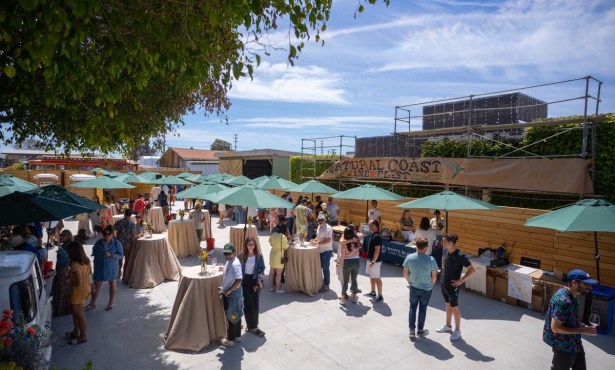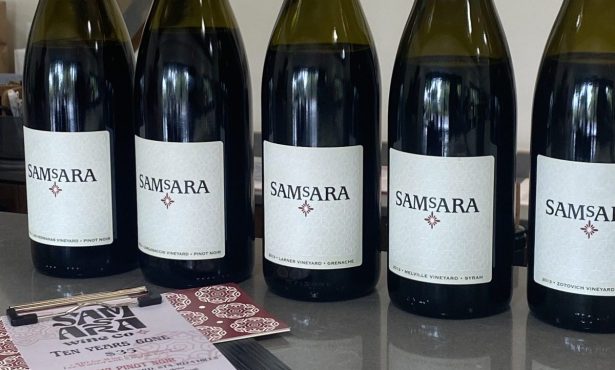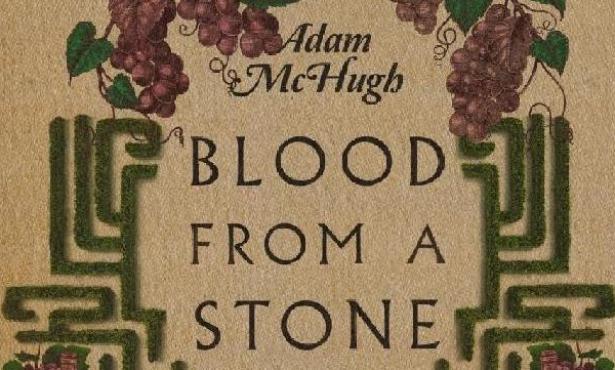Yeah for Viognier
Getting to Know This Aromatic White Grape from the Rhone Valley
With the overwhelmingly high variety of fantastic chardonnay and sauvignon blanc made in Santa Barbara County, it’s no wonder we’re so quick to grab bottles of these all-too-familiar and abundant whites. But stopping there would mean gravely limiting yourself: It’s time to try a lesser-known varietal whose vines are steadily covering more and more of our local land, bearing fruit with superlative fragrances.
Viognier, a white grape from the Condrieu region in France’s Northern Rhone valley, could arguably be the most underrated white varietal in the world. In fact, with its telltale exotic, jasmine flower aromas, peachy flavors, honeyed body, and zesty acidity, viognier’s relative anonymity seems downright bizarre.
In fact, just a few decades ago, viognier vines covered a mere dozen or so acres of the world’s surface, as easier-to-cultivate varietals gained favor. Luckily, enough people demanded the voluptuous wine to keep it around, and now vines also flourish in France’s Languedoc and Ardeche regions, in Italy, California, Australia, and elsewhere.
Santa Barbarans can thank Bob Lindquist for grafting viognier here in 1987, while indulging his passion for Rhone varietals. “It’s an early ripening variety and it likes cool climates — it just seemed like Santa Barbara County would be a natural place for it,” he says of his fateful decision at the Ibarra Young vineyard in Los Olivos. “A far as I know, it was the first viognier made in Santa Barbara County.”
Even though its popularity is growing quickly, viognier obviously hasn’t become an overnight sensation, despite its easy-to-love traits. Seth Kunin of Kunin Wines, who has been working with the grape since 1999, explains, “People don’t know how to say it, it’s spelled a little funny. Things like that matter. That’s why Gewurtztraminer hasn’t gotten very popular here….It’s a little intimidating.”
Perhaps that’s why, when Lindquist started Qupe, he made chardonnay to “pay the bills,” though he admits his heart lies in the Rhone whites like viognier, and its sister grapes rousanne and marsanne.
Not to mention, it takes a braver brand of vintner to take on the grape, especially with chardonnay and sauvignon blanc being not only easier wines to market, but much easier wines to work with in both the vineyards and the cellars. David Hopkins, winemaker for Bridlewood, admits that one of his favorite things about working with viognier “is that so many winemakers have such a difficult time with the varietal.”
Indeed, getting viognier right can certainly be a challenge. “Viognier is such an aromatic varietal that winemakers are kind of seduced by that when the grapes are on the vine,” explains Lindquist. “It’s like, ‘Wow…I think I’ll leave it on the vine longer and let it get even more aromatic,’ but by the time they pick it, they’ve got [too much] alcohol… and not enough acidity.”
Kunin agrees, adding, “You need to make sure that you get it just ripe enough to have that richness, but not so ripe that it becomes fat and oily, and lacking in structure.” Meanwhile, Craig Jaffurs calls it “delicate,” easily out-of-balance, and points out that it oxidizes quickly. Hopkins notes viognier’s “very bitter” skin, which means vintners must take “great care when pressing the fruit to avoid harshness.”
The obstacles this grape hurls at those courageous — or just plain passionate — enough to undertake it only proves how exquisitely alluring viognier can be. Jaffurs vividly remembers his first sip of a Richie Creek viognier in 1992. “When I tasted it, the hair stood up on the back of my neck,” he reminisced. “It has this thrillingly exotic, sensual effect on me that does not happen often.” Now he says it helped “cement” Jaffurs Cellars’ Rhone-style theme that so many adore.
Hopkins suggests yet a wider range for viognier-drinking conditions, recommending it for “warm, spring afternoons” and for watching sunsets in the fall. Not only does he consider it his “go-to Thanksgiving wine,” but he pulls out viognier to drink with seafood and shellfish, chicken, quail, duck, goose, and pheasant, too. “Viognier really comes into its own with food,” he affirmed.
Kunin lauds the wine’s lychee, peach, and orange blossom notes, and recommends it as a great alternative to chardonnay, with more flavors and a lighter palate. He recommends drinking it beside sushi and spicy, exotic foods. “It just has that floral, perfume-y, spring-summer kind of aromatics,” he said. “We should urge people to try some and expand their horizons….There’s probably a viognier for everybody’s palate.”
Personal preference aside, Lindquist advises first time viognier-drinkers to seek alcohol levels between 13 and 14 percent, which bodes a balanced wine that will show off the best viognier has to offer. Luckily, with the wine’s popularity clearly booming, Santa Barbarans will have no privation of those honeysuckle aromas and apricot essence that leaves so many passing their chardonnays.
Viogner to Buy
Ampelos Cellars, $25
Bridlewood, $25
Cold Heaven Cellars, $25-$55
Demetria, $85
Jaffurs, $27
Kunin, $28
Qupe (Bien Nacido Cuvee, 50% chardonnay, 50%viognier), $20



